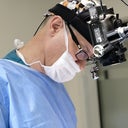My bridge was lowered and my tip was rotated “up” from the original position. I’m about 6 months post op and I’m really disliking how my nose angles down when I smile still. My depressor septi was cut during surgery, so that isn’t the cause. Is this due to my facial anatomy/cheek muscles, or is this something that can be fixed? I just want my tip to stay straight when I smile. I’d prefer if it didn’t move at all to be honest.
Answers (10)
From board-certified doctors and trusted medical professionals
Dr. George Lefkovits, MD - Account Suspended
Board Certified Plastic Surgeon
Answer
More Rhinoplasty Questions
See all Rhinoplasty Q&AWE SEND PRETTY
EMAILS
What’s trending? Who’s turning heads? Which TikTok myths need busting? We’ve got you. No fluff, no gatekeeping—just real talk. Get our free, unfiltered newsletter.







